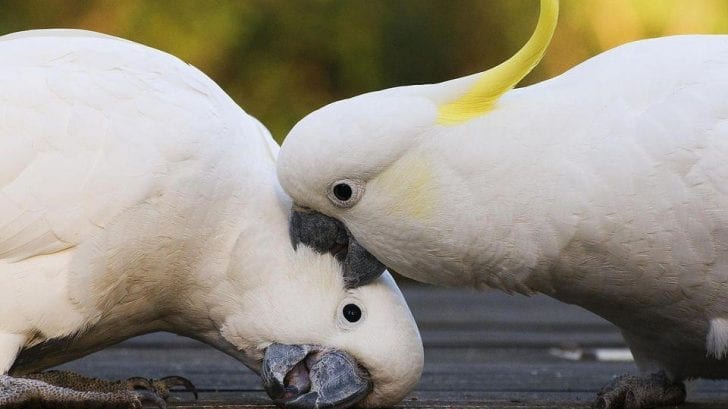

Wingham Wildlife Park’s lesser sulphur crested cockatoos, Fred and Daphne live in a communal long flight enclosure which they share with other parrot species such as citron crested cockatoos and galah cockatoos This enclosure can be found opposite the education building and visitors can head from here to the entrance to the tropical house in which many other bird species call home. The Lesser Sulphur Crested Cockatoo During Your Day Out in Kent This species is now classed as critically endangered and protected accordingly, however its numbers are still declining due to habitat destruction and the ongoing occurrence of illegal trapping for the pet trade.Īs adults the males iris will remain a dark brown to black colour whilst the females iris will take on a reddish colour. Name: Sulpher-crested Cockatoo Genus: Cacatua galerita Description: The Sulphur-crested Cockatoo is one of the most familiar and well known of our parrots. Most of the time these birds will live in pairs or sometimes in small groups, however these groups may be larger during periods of feeding or roosting, to give them safety in numbers. The majority of their diet is made up of seeds, fruits, nuts and berries, however some other vegetable matter such as flowers, buds and leaves may be consumed as well.īoth birds will take turns in incubating the 2 eggs laid by the female, which can take around 28 days to hatch. The average life span of these birds is 50 to 60 years. This bird is found in Sulawesi as well as the Sunda Islands of Indonesia, where they live in open woodland and forests bordering grassland and wheat fields. The average length of this bird is 13 inches. In fact, one centenarian cockie even got a letter from the Queen.Lesser Sulphur Crested Cockatoo Natural HistoryĪlso known as the Yellow Crested Cockatoo. When they do grow up, cockies can live for a long time - perhaps 40 years in the wild to over 100-odd years in captivity.

But if you listen carefully you might hear them - they make a droning 'arrrrrrrr' call when they're begging for food and a quick staccato squeak when they're fed. You're not like to see baby cockatoos because they don't emerge from the nest until they're bigger. You can only tell the sex of the bird by the colour of the eyes: males have a solid black iris, females a red iris. Tracking has also found cockies are very egalitarian when it comes to parenting, with each long-term partner taking turns to stay with the eggs and the chicks, while the other goes out foraging, Dr Martin says. Sometimes multiple flocks will converge on a particular area for a festival of feeding. Professor Kaplan says cockatoos also communicate by changing the shape of their yellow crest and combining this with different body postures to indicate alarm, availability or something lighter.įor example, for 15 years she's taken care of a cockatoo called Pumpkin who can no longer fly due to injury.Īnd she knows when Pumpkin is feeling playful: "His crest goes up completely and his head starts bobbing up and down and sideways."Īnd he says, just like in a township, the birds hang out in various combinations, including gangs of 5 to 20 birds who are best mates. The sulphur in their name refers to the bright yellow plumage on their crest and feathers - its a very similar colour to the yellow colouring of crystallised. They have other shorter calls for communication, she adds. She says this behaviour evolved as a way of terrifying away would-be predators, even though there are few of those left around these days.

It was frightening," Professor Kaplan says. "The worst I ever heard was a flock of 150 that sounded like a freight train. If there's one thing sulphur-crested cockatoos are known for, it's their loud, raucous screeching as they zoom overhead: it can be quite deafening when they're in big numbers. Like all parrots, the Sulphur-crested Cockatoo has a powerful beak the beak is black, but appears grey because of the powdering of white dust used for grooming. Professor Kaplan says some of the damage caused by cockatoos may be a result of humans having gotten rid of so much of the birds' natural habitat. He says keeping them away involves a bit of persistence - you can try spraying them with water, putting a taut wire above railings, or using bird-safe netting to exclude them from areas. "It could just be they've got a bad attitude," says Dr Martin, adding it might be boredom or playfulness, and it might only be some individuals that are guilty of this behaviour. They might be sharpening their beak - but that seems like a lot of sharpening! Without being inside the mind of a sulphur-crested cockatoo, it's not clear why they do this sort of thing. The birds need hollows in old trees to breed.


 0 kommentar(er)
0 kommentar(er)
